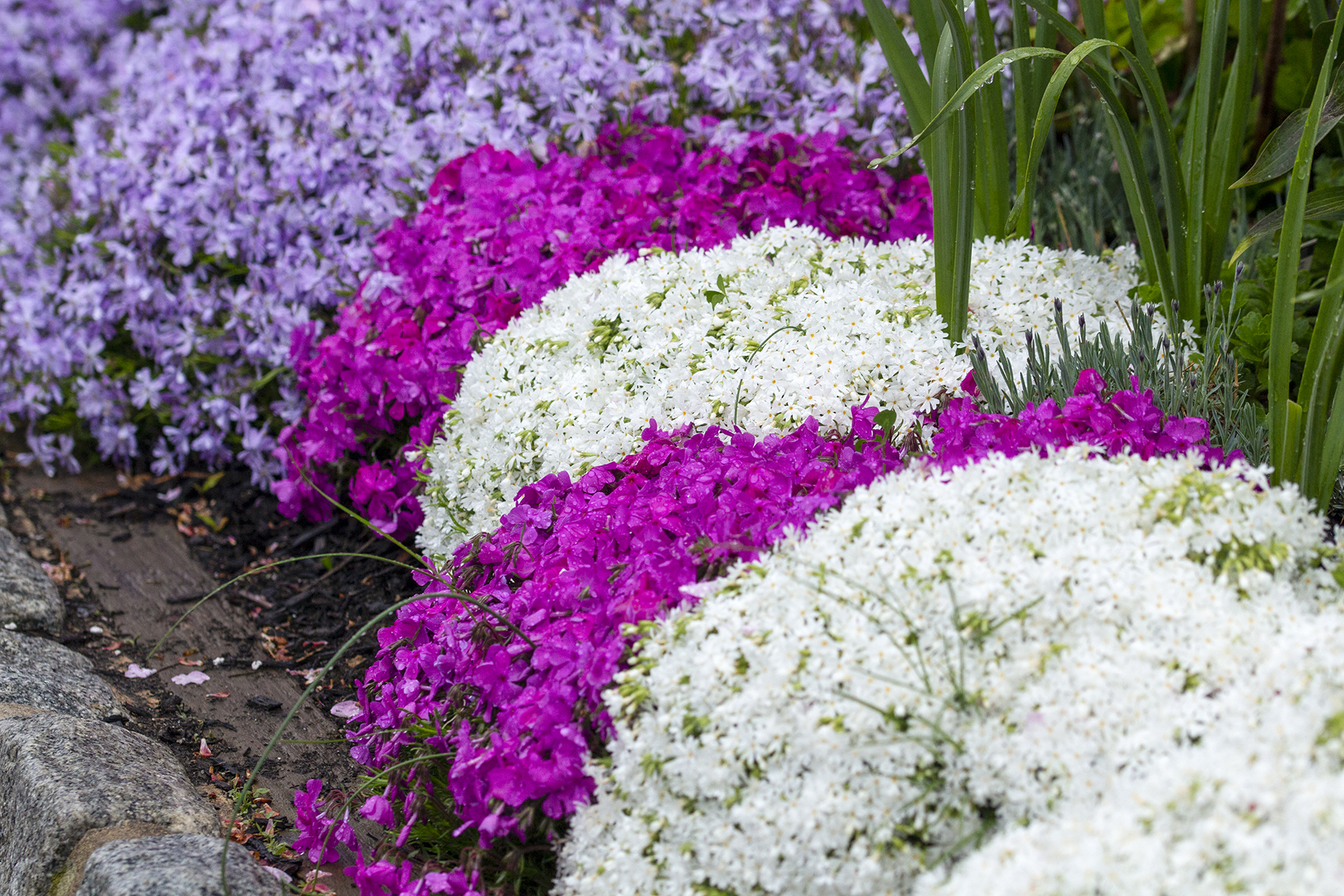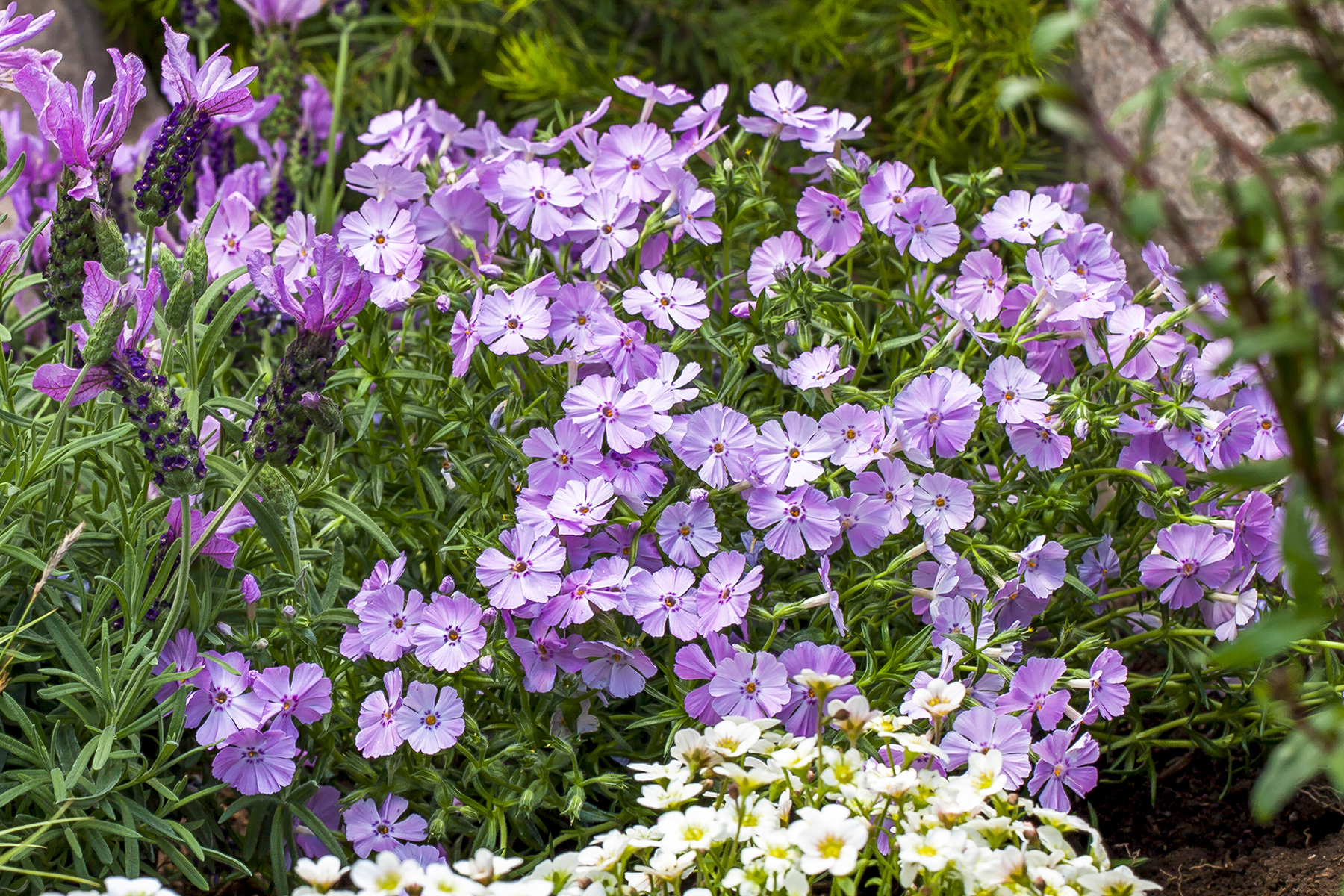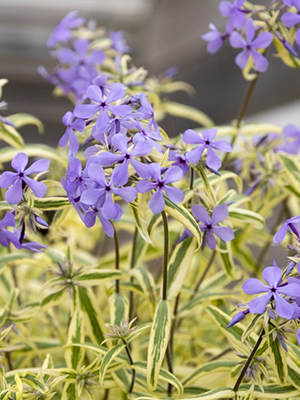The Strengths Behind Phlox Subulata

Among the perennials, Phlox subulata often opens the catagory for early spring sales with vibrant color on the heels of pansies and forsythia. Early birds among the perennial-only crowd can safely plant it as long as the soil is workable. You know the classics: 'Emerald Cushion Blue', 'Drummond’s Pink', 'Purple Beauty', 'Candy Stripe', 'Fort Hill', and so forth.
Yet their tall revenues tell a more complex tale. Subulata sales continue after the blooms fade, unlike other early spring perennials. Their foliage covers the ground like a mat and and comes across as a creeping juniper. Along rural roads, subulata guards no-mow zones by streets and fences. In urban neighborhoods with elevated yards, phlox covers areas where it’s tough to maneuver a mower.
The classics are well regarded by growers and breeders alike. This tri-color garden show the color range among subulatas. Drummond's Pink is more vibrant, but Emerald Cushion Blue sells better — for a reason.

From left to right: Emerald Cushion Blue, Drummond's Pink, Snowflake
A Landscaper’s Perennial
Subulata handles several practical roles in commercial developments. As a living mulch, subulata suppresses weeds and protects the soil, while tight, grippy roots stabilize the earth on slopes. Ground-hugging foliage can be trimmed with a machine, and they spring back if the tires roll over them. Of course, phlox’s vivid, draping color is a natural brightener for terraces and retaining walls.
One finishing nursery on the East Coast sells half their subulata to landscapers. Early spring blooms see the biggest revenues, with replacement sales chugging through the summer. A second surge occurs when beds are planted in fall for spring color. This is a classic landscape sales rhythm.
It also solves a personal mystery. Why does Emerald Cushion Blue spank the other cultivars when Drummond’s Pink has more vibrant colors? Landscapers buy subulata when it’s green, and the calibre of the green counts. Drummond’s Pink gets a bronzy dull look under heat stress whereas Emerald Cushion Blue looks verdant, fresh, and lush. Even in the winter, the plant stays evergreen as long as suffocating snows don’t fall.
The GoldiPhlox subulatas follow the Syngenta breeding style closely: tight blooming window, consistent habit with a full range of color. Trial the white one if nothing else. Pure whites lack vigor in this category, so the news of a strong clear white is promising.
 |
 |
 |
| GoldiPhlox Cherry | GoldiPhlox Lavender Eye | GoldiPhlox White |
Subulata’s Ball and Chain
Winter hardiness happens to be subulata’s strength and weakness: it’s chained to that sharp winter snap in order to bloom. The preferred strategy is to pot up in August and September so plants bulk up during autumn, vernalize over winter, then bloom as soon as the hint of a growing season appears. If you have the space and calendar time it works, but not everybody does. For a fast-finish subulata, source vernalized plugs with cell sizes as large as packaging allows.
Summer dormancy is the flip. Subulatas fold their cards and sometimes don’t return to the table if summer heat gets too high or is too prolonged. You see them as staples in the Mid-Atlantic, the Carolinas, Southern Appalachia, the Central Plains, the Ozarks, and dotted throughout the Mountain West; however, the Gulf Coast region turns away from subulata as a perennial. There it’s used as a cute annual planted in February or March. Southern Texas often switches over to drummondii, a bright red annual phlox and a native son (but no relation to Drummond’s Pink).
Phlox Trot has a fanbase that admires its beefy stance. As a quadriploid, the plant is muscular in color, growth and habit. This photo shows a specimen of Trot next to some Spanish Lavender.

Phlox 'Trot Pink'
Improvements in New Breeding
Although the classics have the subulata character well established and well respected, some areas of improvement do exist. One example is the timing window. Subulata cultivars can bloom weeks apart from one another, and the plants don’t hold well once in color. If you want to empty the house regardless of the color mix within, Syngenta’s GoldiPhlox series is just right. Bred for logistics, all six colors have consistent height and bloom within a week of each other.
GoldiPhlox 'White' is especially promising. The current best-selling white, 'Snowflake', produces a pure, clean white with a beautiful habit, but the cultivar doesn’t grow much in the garden and tends to disappear after two or three years. A clear white that keeps up with the reds and pinks is worth investigating as a replacement.
Syngenta also offers Phlox 'Trot Pink', a gorilla among subulatas. Everything is just bigger. Each flower is the size of a quarter. A cutting is fuller so you can stick one where you might have stuck two. Stems grow thicker before they fuzz out with needle-like leaves.
Proven Winners hybridized their subulatas with an eye towards overall vigor, a part of their bigger-is-better breeding style. The Spring Bling series mounds bigger and blooms with larger flowers. One flower does the work of two, and the large size helps the blooms hang onto the stems longer for a wider season of color. The strength helps to resist the stresses of summer, and the habit moves away from low, knitted beds and more towards discrete mounding like decor specimens.
Violet Pinwheels offers the deepest blues by pulling in some bifida genetics into the breeding. Blue Moon is the best selling divaricata, but Blue Ribbon has truly neat varigation in the foliage. Ruby Riot is a vigorous hybrid shown in front of Polemonium 'Heaven Scent' for scale.
 |
 |
 |
| 'Violet Pinwheels' | 'Blue Ribbons' | Spring Bling 'Ruby Riot' |
Other Early Phloxes
Although subulata has the landscaping strength, other phlox species have their own significant features for the garden center and breeding companies have locked onto them.
- Darwin has released the Spring Splash series at CAST this year. These are stolonifera hybrids that begin to bloom just as subulata falls off for the season. The flowers are similar, but the habit is puffed up and rounded in a decor style. Plants grow about a foot high and can handle light shade.
- Following stolonifera is divaricata, comprised of woodland phloxes that thrive at the edges of meadows and forests. Today, that habitat translates to the yard-and-tree mix found in many home gardens and neighborhoods. Divaricatas strongly prefer the dappled shade; do not plant them in full sun. 'Blue Moon' and 'Blue Ribbons' are the most popular varieties. Darwin also plans to release some new divaricata material next year.
- ChicagoLand Grows has released a couple of bifida hybrids, 'Violet Pinwheels' and 'Perfectly Puzzling', and they plan to release more next year. Colors are more saturated and dappling is more common.
Popular Articles








